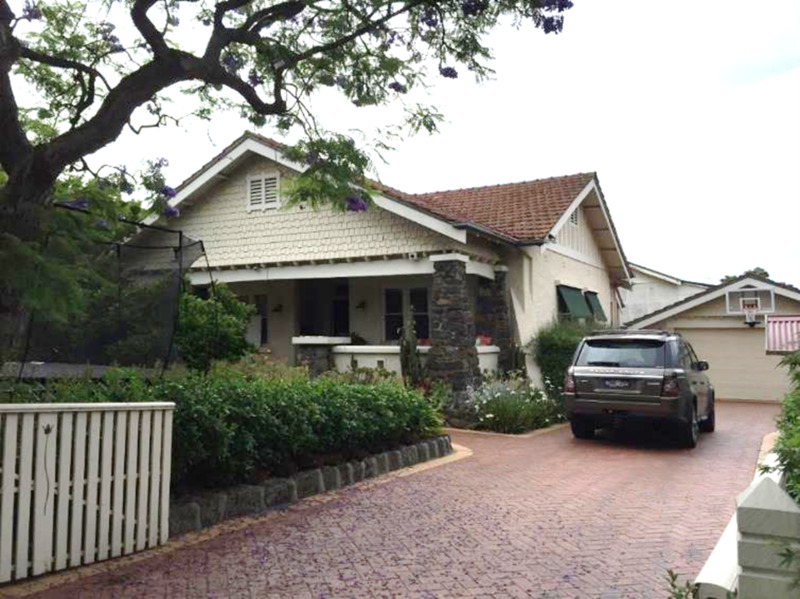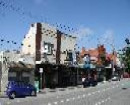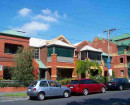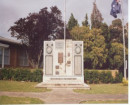Back to search results
Adair House
40 Havelock Road, HAWTHORN EAST, BOROONDARA CITY
Adair House
40 Havelock Road, HAWTHORN EAST, BOROONDARA CITY
All information on this page is maintained by Boroondara City.
Click below for their website and contact details.
Boroondara City
-
Add to tour
You must log in to do that.
-
Share
-
Shortlist place
You must log in to do that.
- Download report

Adair House, 40 Havelock Road Hawthorn East

On this page:
Statement of Significance
What is significant?
Adair House at 40 Havelock Road, Hawthorn East constructed in 1917, is significant to the City of Boroondara.
How is it significant?
Adair House is of local architectural, aesthetic and associative significance to the City of Boroondara.
Why is it significant?
Adair House is a largely intact early example of the type of housing that began to appear in the suburbs following the First World War. The Californian Bungalow type would dominate domestic architecture through the 1920s, with its tapered stone piers supporting the gabled porch roof, and use of shingles, roughcast walls, and low-pitched roof of intersecting and nested gables. (Criterion D)
Adair House is significant as a largely intact example of a suburban bungalow type. The house is an example of the evolutionary process of the Californian Bungalow to an Australian hybrid with region-specific details. The house combines traits of the Californian Bungalow (roughcast walls, shingles and low-pitch gable roof) with Old English Revival details, such as the three-sided bay window and the sloping buttress at the north-west corner, making use of local materials, such as bluestone for the pylons supporting the porch roof. (Criterion E)
Show more
Show less
-
-
Adair House - Physical Description 1
40 Havelock Road, Hawthorn East is on a corner site, giving two frontages and is a relatively early example of a Californian bungalow. . While the street address is Havelock Road, the entrance and primary frontage of the house face Campbell Grove, perhaps because Havelock Road did not continue through to Pleasant Road when the house was constructed.The house includes many of the markers of the Californian bungalow style, combined with elements of the Vernacular (Old English) Revival that was more common in Melbourne in the late 1920s. Californian influence can be seen in the wide, low-pitch roof, which is clad in terracotta tiles, taking the form of intersecting gables. The nested gables facing Havelock Road are also drawn from the Californian Bungalow, as is the gable facing Campbell Grove that projects over a full-width porch. The gables on both street frontages are clad in shingles, featuring alternating rows of plain and staggered, decorative patterning. Additional half-timbered gables can be found on the remaining elevations. Timber framed vents are centred at the top of the gables on all elevations.The relatively small original double-hung sash windows, featuring diamond-paned leadlight to the upper sashes (this motif is repeated in smaller awning windows and in the new windows to the kitchen and living areas) are more commonly associated with the Old English Revival style. The projecting canted bay window with a shingled hood above facing Havelock Road is a smaller version of those found on Federation Bungalows, with greater structural expression of the framing around the hood. This type of window would become a common feature of the later Old English Revival style. The relative lack of expressed structural timber framing, other than around the porch, is also more typical of later Old English Revival styles. The heavy sloping buttress at the north-west corner of the house is also a reference to the Old English Revival style. The buttress is unusual as it is not associated with a porch, which is a more common location for buttresses. This type of buttress is suggestive of corners of buildings such as ‘Lowicks’, designed by English architect C.F.A Voysey in 1894. Voysey was one of the leading architects in the Vernacular Revival in the United Kingdom in the last decade of the nineteenth century. His work was widely published in architecture journals and has been linked to the origins of the Craftsman and Californian Bungalow styles in the United States.
The gabled roof of the deep porch to the Campbell Grove elevation is supported by four tapering stone-clad piers. The porch functions as an outdoor room, in keeping with the outdoor lifestyle encouraged from the late nineteenth century as ‘growing affluence, improved transport and awareness of the ill-effects of modern urban life led to a widespread, outdoors, back to nature movement’ (Clare 1984:7-8). Unusually, the piers are faced in bluestone instead of the more common field stone, giving a more localised and rustic appearance to the house. The piers are topped with squared and stucco capping with expressed timber framing adding to the heaviness of the porch created by the piers and solid balustrade. The sense of mass is further enhanced by the squat, roughcast chimney, relatively small windows and the large buttress that projects from the north-west corner of the house.The house appears to be substantially intact from the street. A standalone double garage has been added to the south west of the house. The kitchen and living areas have been extended and reconfigured and a covered pergola has been added adjacent to the living areas, behind a high fence on Havelock Road. Many of these alterations are not visible from the street; where the newer works can be seen, they are clearly identified as later through the use of form and materials but remain sympathetic to the house. Later works therefore do not have a detrimental impact on the significance of the building.The landscaping and fencing, including boundary fencing, are not original.Heritage Study and Grading
Boroondara - Municipal-Wide Heritage Gap Study Volume 6: Hawthorn East
Author: Context
Year: 2018
Grading:
-
-
-
-
-
FORMER ES&A BANK
 Victorian Heritage Register H0534
Victorian Heritage Register H0534 -
CAMBERWELL COURT HOUSE AND POLICE STATION
 Victorian Heritage Register H1194
Victorian Heritage Register H1194 -
RIVOLI THEATRE
 Victorian Heritage Register H1524
Victorian Heritage Register H1524
-
1 Brockenshire Street
 Yarra City
Yarra City -
1 Bundara Street
 Yarra City
Yarra City -
1 Forster Street
 Hobsons Bay City
Hobsons Bay City
-
-












